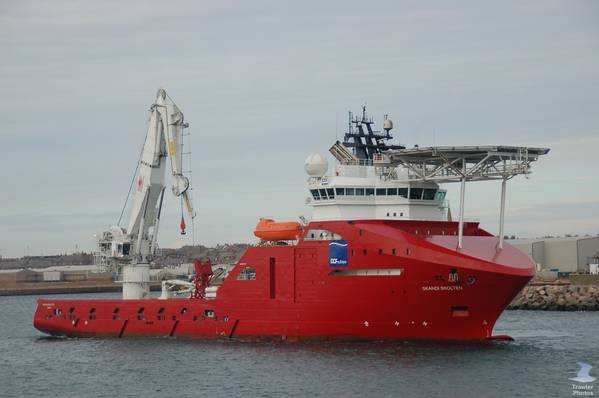Offshore oil and gas projects require massive equipment, floating rigs, and production platforms that must remain stable in deep waters. Keeping such enormous structures in place is no easy task, especially when strong winds, waves, and currents are constantly at play. This is where anchor handling vessels, often referred to as anchor handling tug supply vessels, become indispensable.
These vessels are among the most powerful and versatile ships in the offshore industry. They combine the towing strength of a tug with the supply and support functions of offshore vessels. Their primary role is to deploy, retrieve, and reposition anchors that secure rigs and platforms, but their importance goes far beyond anchoring alone.
What Are Anchor Handling Vessels?
Anchor handling vessels are specially designed ships built to tow floating drilling rigs and set heavy anchors on the seabed. They are fitted with strong winches, towing systems, and large open decks to handle massive anchors and chains. Their engines are extremely powerful, giving them the thrust required to maneuver in tough offshore conditions.
Unlike regular supply vessels, anchor handling ships are designed for strength and precision, as even a small mistake in positioning an anchor can compromise the stability of an entire drilling rig.
Key Roles of Anchor Handling Vessels
1. Towing and Positioning Rigs
Before drilling begins, rigs must be transported to the designated offshore location. Anchor handling vessels tow these rigs over long distances and help position them precisely at the drilling site.
2. Deploying Anchors
Once a rig is in place, anchors must be dropped and secured to the seabed to hold it steady. The vessel carries the anchors and chains, lowers them into the water, and places them accurately according to the rig’s mooring design.
3. Repositioning Anchors
During drilling campaigns, rigs sometimes need to be adjusted or moved slightly to continue operations. Anchor handling vessels retrieve and redeploy anchors quickly, ensuring minimal downtime.
4. Emergency Response
In the event of a storm, equipment failure, or other emergencies, anchor handling vessels are on standby to tow rigs to safety or assist in stabilizing them. Their towing power makes them essential for offshore safety.
5. General Supply and Support
Many anchor handling vessels also serve as supply ships, delivering fuel, water, drilling materials, and other essentials to rigs and platforms. This dual function increases efficiency offshore.
Why Anchor Handling Vessels Are Vital
- Stability of Offshore Structures
Floating rigs and semi-submersible platforms depend entirely on secure anchoring. Without anchor handling vessels, offshore drilling in deep waters would not be possible.
- Operational Efficiency
The ability to quickly tow, position, and adjust rigs keeps offshore projects on schedule and reduces downtime.
- Safety Assurance
These vessels serve as a first line of defense during emergencies, making them indispensable for protecting lives, assets, and the environment.
- Versatility
Modern anchor handling vessels are designed to perform multiple tasks, from towing and mooring to firefighting and oil spill response.
Challenges in Anchor Handling Operations
Working with anchors and heavy chains on a rolling deck in rough seas is one of the most dangerous tasks offshore. Crew members face risks such as snapped cables, heavy loads swinging uncontrollably, and sudden vessel movements. This is why safety training and advanced handling equipment are critical in anchor handling operations.
Additionally, operating such powerful vessels is expensive, with high fuel consumption and significant maintenance needs. The industry is now looking toward hybrid propulsion and fuel efficient designs to make them more sustainable.
The Future of Anchor Handling Vessels
As offshore exploration moves into deeper waters, anchor handling vessels are evolving. They are being built larger, stronger, and equipped with advanced positioning systems to improve precision. Digital technology is also being used to monitor loads and improve safety during anchor deployment. At the same time, environmental regulations are pushing shipbuilders to design cleaner and more efficient vessels to reduce emissions.
Conclusion
Anchor handling vessels are the muscle of offshore operations. They provide the towing power and precision needed to secure massive rigs in place, while also serving as supply ships and emergency responders. Without them, offshore drilling and production in deep and remote waters would not be possible.
As technology advances and offshore activities expand, anchor handling vessels will continue to play a central role in ensuring stability, safety, and efficiency in the global energy sector.

